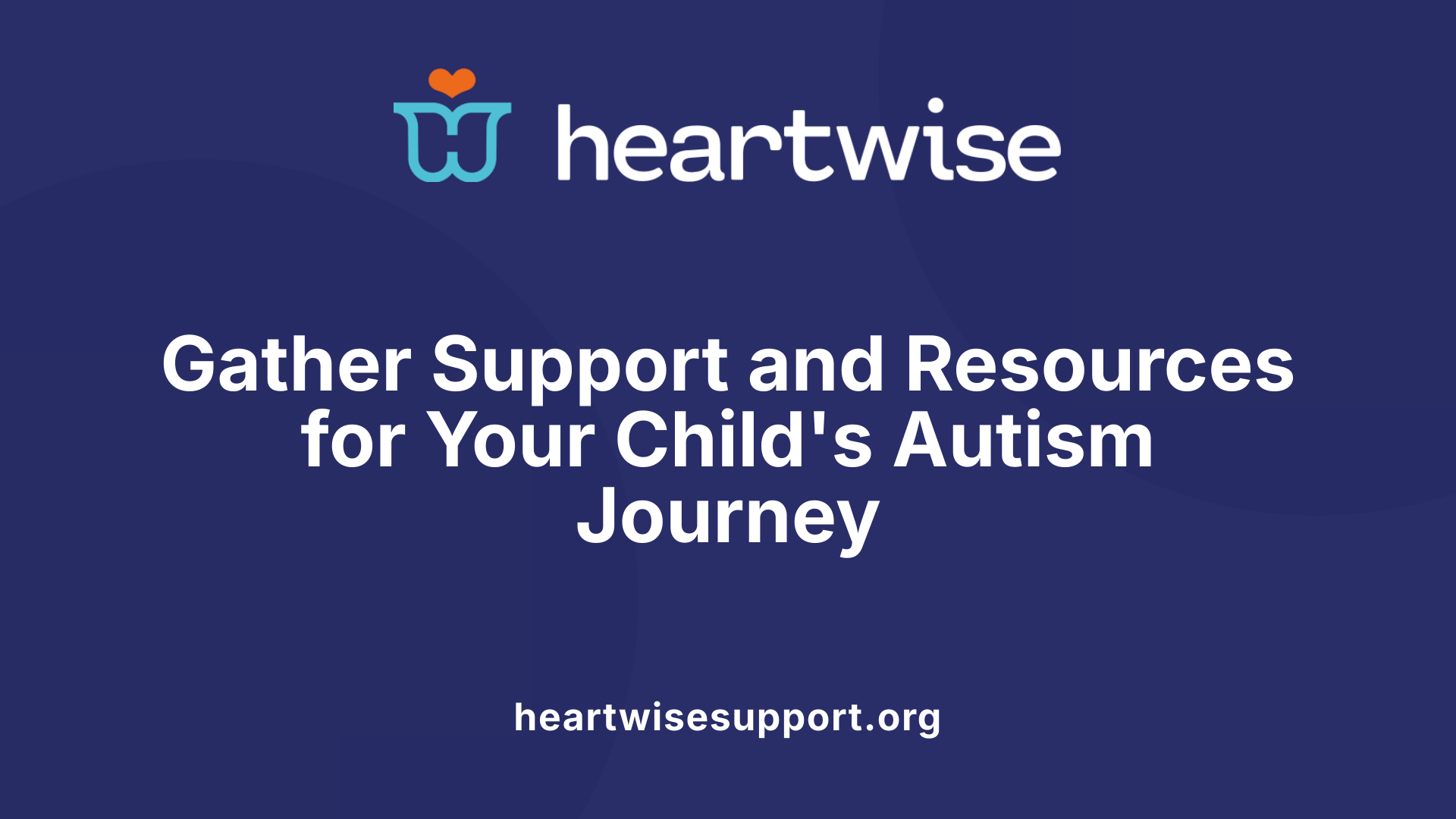Understanding and Supporting Children with Autism After Diagnosis
Receiving an autism diagnosis for your child can be an emotional and life-changing moment. It often brings a mixture of relief, worry, confusion, and hope. While adjusting to this new reality can be challenging, it also opens the door to tailored support strategies that foster your child's development and well-being. This article aims to give comprehensive guidance on how parents and caregivers can effectively support children with autism after diagnosis, emphasizing emotional resilience, practical interventions, and accessing essential resources.
Processing and Accepting Your Child's Diagnosis

How do I process and accept my child's autism diagnosis?
Receiving an autism diagnosis for your child can trigger a whirlwind of emotions. It is common for parents to feel relief, grief, confusion, worry, or even guilt. Recognizing that these feelings are part of a natural adjustment process is important.
The first step toward acceptance is education. Learn about autism from credible sources, such as reputable charities, healthcare providers, or specialized organizations like Autism Speaks. Gaining knowledge about autism spectrum disorder (ASD)—including its strengths, challenges, and variability—can help demystify the condition and reduce feelings of stigma.
Connecting with support groups, peer networks, and therapy services provides emotional comfort and practical advice. Sharing experiences with other families going through similar journeys can alleviate feelings of isolation and foster a sense of community.
It's also helpful to allow yourself time to grieve any expectations lost or altered. This is a normal part of processing. Focus on your child's individual strengths and progress, acknowledging that each child's potential unfolds uniquely and at their own pace.
Building a strong support system—including family, friends, professionals, and community resources—provides ongoing emotional strength. Remember, acceptance is not a one-time event but a gradual process that develops over time.
Seeking continuous information, participating in support networks, and maintaining hope can empower you on this journey. With patience, involvement, and support, you can foster a positive outlook for your child's future.
Building a Support System and Seeking Information
 When a child is diagnosed with autism, it can feel overwhelming for families. Supporting children effectively begins with understanding their unique needs and strengths. Once diagnosed, early intervention becomes a crucial step. Engaging in therapies such as speech therapy, occupational therapy, and social skills training can significantly improve developmental outcomes. Parents and caregivers should work closely with professionals to craft personalized plans and reinforce learning at home through structured activities and routines.
When a child is diagnosed with autism, it can feel overwhelming for families. Supporting children effectively begins with understanding their unique needs and strengths. Once diagnosed, early intervention becomes a crucial step. Engaging in therapies such as speech therapy, occupational therapy, and social skills training can significantly improve developmental outcomes. Parents and caregivers should work closely with professionals to craft personalized plans and reinforce learning at home through structured activities and routines.
Creating a nurturing environment involves open, empathetic communication with the child, being responsive to their sensory sensitivities, and celebrating their talents. While focusing on their progress, caregivers should also remember the importance of self-care for their emotional well-being.
Connecting with a network of support is vital. Support groups, both local and online, can provide valuable guidance, shared experiences, and a sense of community. Resources from autism charities like Autism Speaks, as well as government programs and educational services, serve as additional avenues of assistance. Parents should explore these options early to access therapies, educational support, and practical advice.
In the immediate aftermath of diagnosis, families are encouraged to gather information about autism by consulting trustworthy sources. Developing an individualized support plan alongside professionals ensures tailored care that adapts to the child's evolving needs. By building a strong support system, families can navigate the journey with confidence, knowing they are not alone and that help is available at every step.
Implementing Practical Strategies at Home

How do I support my child with autism at home?
Supporting a child with autism in the home environment requires patience, understanding, and consistency. Creating a predictable daily routine helps your child feel secure and reduces anxiety. Establishing clear and simple schedules with visual supports, such as pictorial charts, guides, or picture-based rules, allows your child to better understand what to expect throughout the day.
Visual supports are essential tools—they can include visual schedules, social stories, and visual warnings before transitions. These visuals aid in communication and help your child prepare for changes, minimizing stress and behavioral challenges.
Effective communication methods like total communication—combining gestures, signs, and communication devices—support interaction and can improve your child's ability to express needs and desires. Respecting individual sensory sensitivities is also critical; decreasing loud noises, bright lights, or cluttered spaces creates a calmer environment suitable for your child's comfort.
Reinforcing positive behaviors through immediate praise or reward systems encourages your child to succeed and learn new skills. When behavior is disruptive but safe, ignoring it can diminish unwanted behaviors over time.
Focusing activities on your child’s strengths and interests fosters engagement, motivation, and development. By integrating these strategies—structured routines, visual supports, tailored communication, sensory considerations, and positive reinforcement—parents can better support their child's growth and create a nurturing, supportive home environment.
Therapeutic Interventions and Educational Support

What types of support and therapies are effective for children with autism?
Supporting children with autism effectively involves a variety of therapies tailored to their individual needs. Early intervention therapies are particularly important, starting as soon as autism is diagnosed. Speech therapy helps improve communication skills, while occupational therapy addresses daily living skills and sensory sensitivities. Physical therapy may assist with motor coordination difficulties.
One of the most well-established behavioral treatments is Applied Behavioral Analysis (ABA). Supported by extensive research, ABA focuses on reinforcing positive behaviors and reducing challenging behaviors, leading to improvements in language, social interaction, and daily living skills.
Creating an Individualized Education Program (IEP) is crucial for children in school settings. This plan, developed collaboratively with educators and specialists, ensures the child receives customized support such as classroom aides, tailored learning goals, and accommodations.
Participation in social skills groups can foster peer interactions and help develop essential social and emotional skills. Extracurricular activities, like art therapy or therapy involving animals such as horseback riding, can also promote interaction, self-expression, and confidence.
To maximize benefits, families should work closely with healthcare providers to review and adapt these interventions regularly. This ongoing assessment ensures supports continue to meet the child's changing needs and provide the best chance for development and success.
Supporting Emotional Well-Being and Family Dynamics
How can families manage the emotional challenges after an autism diagnosis?
Receiving an autism diagnosis for a child can evoke a wide range of emotions among family members, including relief, worry, confusion, or sadness. Managing these feelings is essential for maintaining family stability and supporting the child's development.
One effective way to handle emotional challenges is to seek support from family therapists or counselors who specialize in autism. Connecting with peer support groups—whether local or online—can provide families with shared experiences, advice, and reassurance. These communities can help normalize feelings and offer practical coping strategies.
Open communication within the family is vital. Talking honestly about fears, hopes, and questions fosters understanding and strengthens bonds. It also helps in addressing feelings of guilt or blame, which are common but unnecessary.
Prioritizing self-care is crucial. Caregivers should take time for themselves, whether through hobbies, relaxation techniques, or simply resting. Respite care services are available to give parents a break while ensuring the child’s needs are met.
Establishing a balanced daily routine and focusing on your child's strengths and small successes can instill hope and resilience. Celebrating milestones, no matter how small, encourages a positive outlook.
Remember, initial feelings of being overwhelmed are normal. Over time, with patience, understanding, and community support, families often find they become more resilient and better equipped to navigate ongoing challenges. Cultivating a hopeful and compassionate perspective supports emotional well-being and fosters a nurturing environment for the entire family.
Legal, Educational, and Long-Term Planning
What formal support options are available following an autism diagnosis?
After receiving an autism diagnosis, families have access to a variety of formal support services tailored to meet the needs of the individual child or adult. These supports aim to promote development, independence, and integration into society.
Support plans usually include personalized services from specialists such as speech therapists, occupational therapists, behavioral analysts, and educational staff. These services help enhance communication, social skills, and daily functioning.
Educational accommodations play a crucial role in long-term success. Schools are required to develop an Individual Support Plan or an Education, Health, and Care Plan (EHCP) in the UK, which details the specific support and adjustments needed. Such adjustments can include additional aides, sensory-friendly environments, or flexible schedules. Legislation like the Equality Act 2010 protects against discrimination and ensures access to appropriate educational opportunities.
In higher education, students diagnosed with autism can request assessments for reasonable adjustments such as extra time on tests or tailored learning support. These accommodations help enable equitable access to university resources.
Healthcare providers and local authorities work closely with families to coordinate necessary interventions. Support organizations and charities, such as Autism Speaks and local autism societies, offer guidance on navigating available services.
Legal and financial planning is vital for ensuring ongoing support, especially into adulthood. This includes exploring benefits programs, supported living arrangements, and employment rights.
In summary, the support landscape for autism encompasses legal protections, specially tailored educational services, and healthcare interventions. Together, these resources help individuals with autism achieve their full potential and lead fulfilling lives.
| Support Type | Description | Key Resources |
|---|---|---|
| Educational support | Accommodations, EHCP development, tailored teaching | Local schools, government education departments |
| Healthcare services | Speech, occupational, behavioral therapies | NHS services, private providers |
| Legal protections | Anti-discrimination laws, rights to accommodations | The Equality Act 2010, legal aid services |
| Long-term services | Supported living, employment programs | Local authorities, national charities |
| Financial support | Benefits, grants, supported housing | Government benefits, legal advisors |
Staying informed about available supports and actively engaging with professionals and community resources ensure comprehensive care and assistance throughout a person's life journey.
Fostering Growth and Hope in the Post-Diagnosis Phase
Support for children with autism is an ongoing journey that evolves as their needs grow and change. Starting with acceptance and understanding lays the foundation for effectively implementing therapeutic interventions, creating supportive environments, and accessing the right services. Maintaining family resilience, building strong support networks, and focusing on your child's strengths can nurture their development and enrich family life. Remember, every step taken with patience, knowledge, and compassion brings your child closer to realizing their full potential. Embrace this journey with hope, confidence, and a commitment to lifelong support.
References
- The do's and don'ts after an autism diagnosis
- First Steps After Receiving an Autism Diagnosis - JCFS Chicago
- Newly diagnosed with autism: things to help - NHS
- 5 Steps to Take After Your Child's Autism Diagnosis
- Emotional support for family members after a diagnosis
- Newly diagnosed - Autism Speaks
- Friends & Family: What to say - Autism Research Institute
- Newly Diagnosed - Autism Science Foundation
- Helping Parents Cope With An Autism Diagnosis - Health Matters
- 8 Steps to Take After Your Child's Autism Diagnosis - Blue ABA











